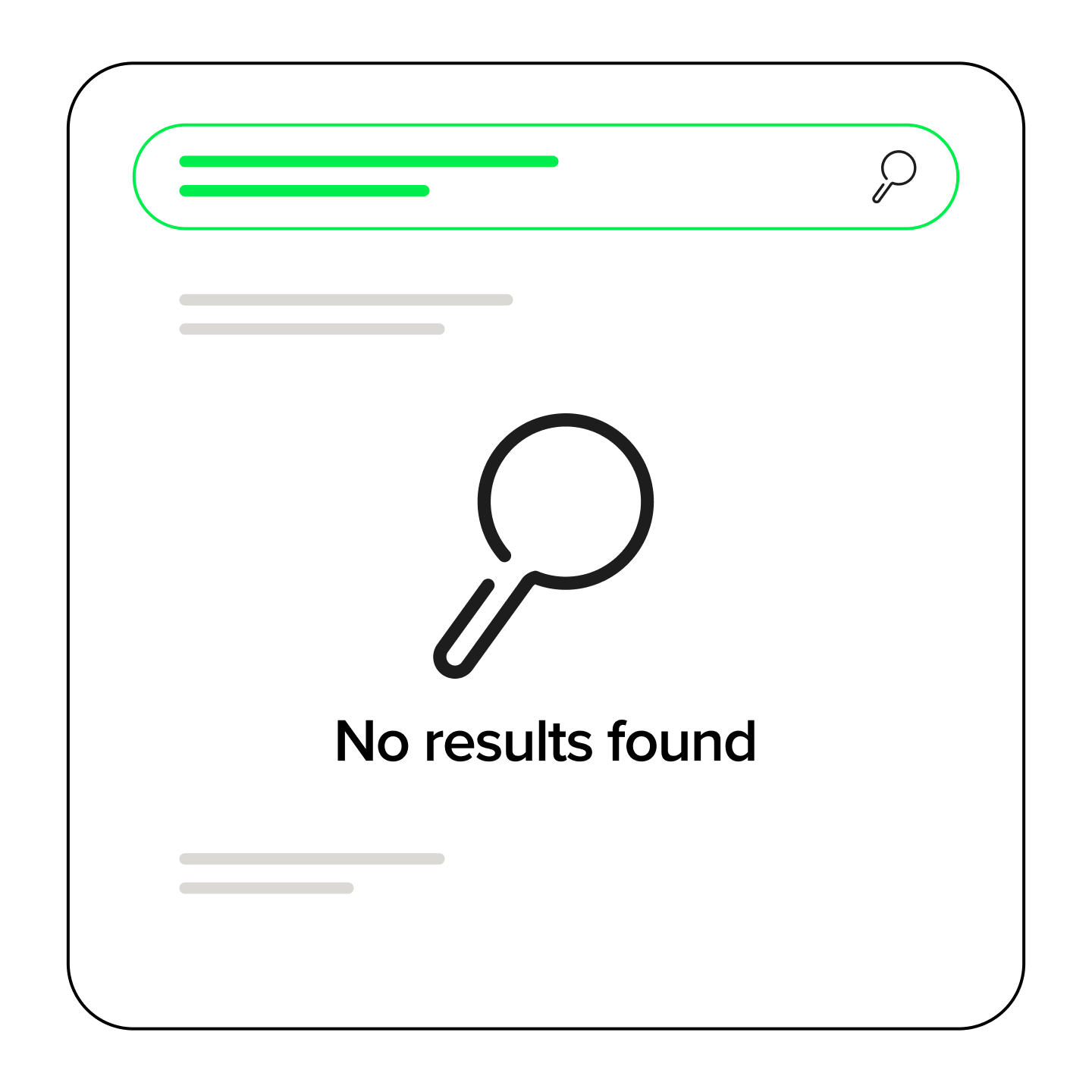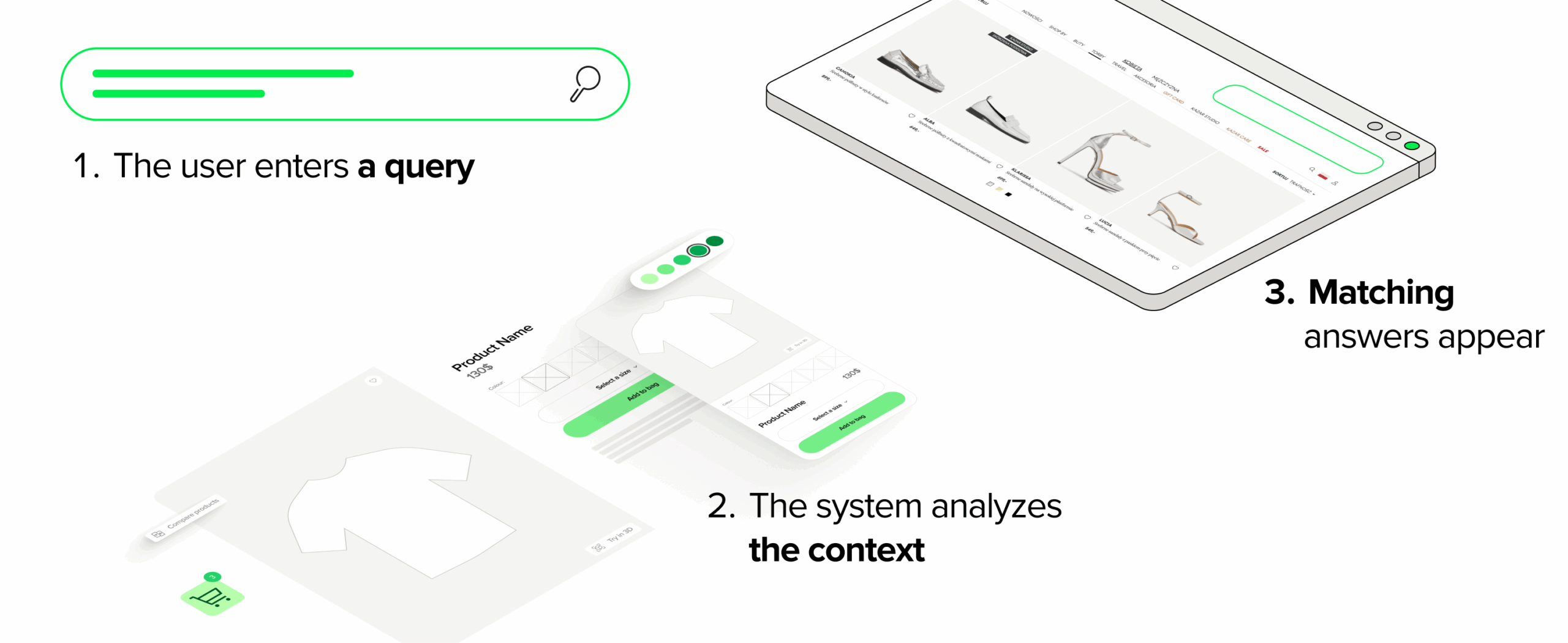Search engines must keep up with users
“What can I do for tired eyes after a sleepless night to look fresh at a meeting?” – increasingly longer and more complex queries are becoming the norm, and users are looking for solutions to specific problems when formulating their queries.
According to Google data, in just the last six months, the number of queries consisting of five or more words grew 1.5 times faster than the number of shorter queries. This means that Internet users are formulating their searches in a more conversational way – instead of typing in a phrase such as “espresso machine,” they are increasingly typing in a whole question, e.g., “what coffee machine for one person with a milk frothing function.” Such complex phrases indicate that users expect the search engine to understand the context and intent, just as a conversation partner understands a question asked in natural language. Thus, we will see a trend in which searching increasingly resembles conversation.
What is behind this change? Consumers are spending more time researching before making a purchase decision, which makes their queries more precise. Google has observed that 60% of consumers perform at least six different activities (searches, comparisons, etc.) before deciding on a product or brand. Since we are paying more attention to searching for information, it is natural that our queries are getting longer – we want to include all the relevant criteria in the question right away, hoping to get specific answers quickly.
Growing user expectations regarding results
Not only is the way questions are asked changing, but expectations regarding the quality of results are also growing. Today’s internet users are accustomed to search engines “knowing what they mean” and immediately providing them with the right answers. For this reason, personalization and relevance of results are becoming increasingly important. According to McKinsey, 71% of consumers expect personalized experiences – this also applies to search engines, which should understand their preferences and history. It is no surprise that approximately 75% of users consider a good search engine on a website to be a very important factor when shopping online. In short: a good search engine is not a luxury, but a standard that customers demand from modern websites.
Imagine that you are looking for a specific product on your website and the search engine presents irrelevant results or no results at all. What do you do? If you are like most people, you leave the site and go to the competition. As many as 70% of users abandon the purchasing process if the store’s internal search engine works poorly (returns irrelevant results or is difficult to use). Frustration with the lack of results causes people to look elsewhere: it is estimated that about 12% of users immediately leave the site and go to the competition when they cannot quickly find what they are looking for. In other words, you can lose up to one in ten potential customers right away if your search engine fails.

On the other hand, the benefits of a good, “smart” search engine are enormous. Users looking for specific products are usually the most determined – they have a specific intention and want to fulfill it quickly. E-commerce research shows that although on average only 10–15% of visitors use the internal search engine, they generate as much as approx. 45% of the store’s revenue! These customers convert much more often – the conversion rate of search engine users can be up to 2–3 times higher than those who only browse offers. In total, the conversion rate can be up to 50% higher when a store has an advanced, well-optimized search engine compared to a basic keyword-based search engine. This translates directly into sales. For example, Amazon has noticed that conversion rates increase up to six times after a search is completed, from ~2% to ~12%.
Users expect more and more from search engines – they want them to be fast, intelligent, and understand their intentions and context. Websites that provide this are able to retain customers more effectively and encourage them to take action, while ignoring search engine quality risks user churn and revenue loss.
Semantic search:
a natural step in evolution
For years, search engines worked based on keyword matching. If a user entered a phrase, the system searched for its exact equivalents in product names or tags. But today, people no longer just enter keywords – they enter needs, contexts, and questions.
That is why there is increasing talk about semantic search – search that not only “reads” words, but understands their meaning. Language models (LLMs) help with this, as they can recognize what the user really wants – even if they use very descriptive language.
For example, instead of typing in the name of a cosmetic product, the user is looking for something that will “help them look fresh after a sleepless night.” A traditional search engine cannot handle such a phrase. But a semantic solution will recognize that it is about:
- face care products,
- a brightening or refreshing effect,
- probably for tired skin or dark circles under the eyes.
This approach makes the search engine more helpful – it responds not to a specific word, but to the user’s real need. And this is the direction that brands that care about a better customer experience and higher conversion rates are starting to take. Companies that stick with classic keyword-matching search systems will sooner or later notice that reality is already slipping away from them.

Searching becomes a conversation
The way users interact with search engines is undergoing a fundamental change. Today, it is no longer just a matter of matching keywords – searching is increasingly resembling a conversation in which the user describes their problem, need, or situation, and the system should be able to respond appropriately.
Traditional search engines on store websites are increasingly proving too limited to meet these expectations. Meanwhile, the development of artificial intelligence-based tools, including language models, is setting a new standard. Understanding context, interpreting natural language, and personalizing results are becoming key.
Companies that are already implementing a semantic approach to search are building a real competitive advantage. However, we predict that in the near future this will simply become the market standard.
What next?
Implementing a semantic search engine does not have to be difficult
Introducing a search engine that truly understands user needs is a big step for many organizations—not only technologically, but also organizationally. It requires ensuring the quality of product data, order in content, different types of data, and consistency between different systems. There is often a concern that this means rebuilding the entire technical infrastructure or time-consuming integration with existing solutions.
However, many user expectations can be met more quickly and without interfering with the infrastructure. Thanks to technology based on language models, it is possible to introduce an intermediate layer that captures queries about products or services, interprets them semantically, and directs them to the current search engine in a form that is understandable to the system.
This is an effective tool for realistically improving the user experience without a costly revolution, while giving the company the opportunity to take the first step towards a fully semantic search engine.
Sources
-
Amp Agency (2024). How AI is Reshaping Google Ads and the Search Experience. https://www.ampagency.com/blog/ai-reshaping-google-ads-experience
-
Codeitlabs (2023). The Revolution of E-Commerce Search 2023: 10 Trends and Developments. https://codeitlabs.com/en/news-en/2023/05/the-revolution-of-e-commerce-search-2023-10-trends-and-developments
-
Ladder & Co (2024). Both search term length and pre-purchase actions are increasing, according to Google. https://www.linkedin.com/posts/ladderco_both-search-term-length-and-pre-purchase-activity-7214016986568122368-Iuzl?utm_source=share&utm_medium=member_desktop&rcm=ACoAADSSSLkBUyE9H_cvqn_2SjoWuW07t0czQiY
-
McKinsey & Company (2021). The value of getting personalization right (or wrong) is multiplying. https://www.mckinsey.com/capabilities/growth-marketing-and-sales/our-insights/the-value-of-getting-personalization-right-or-wrong-is-multiplying
-
Opensend (2025). 13 On-Site Search Conversion Rate Statistics For eCommerce Stores. https://www.opensend.com/post/on-site-search-conversion-rate-statistics-ecommerce
Author
Michał Połetek
IT Client Partner
Client Partner with extensive experience in business development based on strong relationships.
He has been involved in the technology industry since the beginning of his career – he took his first steps as the founder of his own startup, then gained experience in the positions of Product, Project, and Marketing Manager.
At SYZYGY, he is responsible for building partnerships with clients and delivering real business value. In his work, he is guided by a simple motto: “How can I help?”


Are you considering implementing a semantic search engine on your website?
If you see that users expect more accurate and contextual results, you don’t have to rebuild the entire system right away.
We offer an approach that allows you to quickly test the new search quality. Without risk and costly integrations. The solution works alongside your current structures, interpreting queries in natural language and better reflecting user intent.
Wondering how this would look in your organization?
Let’s talk! We will prepare a free test scenario based on your company’s context and its real needs.



